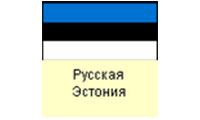Metropolitan Augustin (Peterson)
Augustin (Peterson; 5th/17th of February 1873, Riga County, Governorate of Livonia, Russian Empire – 4th of October, 1955, Western Germany) – Metropolitan of Riga and all Latvia from 1936 to 1940.
Augustin Peterson was born on February 17 (5), 1873 (or, according to other sources, on May 20 (8), 1875) in Riga County, into a Latvian Orthodox peasant family.
Starting in 1883, he attended the Orthodox parish school at the Church of St. Nicholas the Wonderworker in Kosa. In 1885, he entered the Riga Theological School, and later studied at the Riga Orthodox Theological Seminary, graduating in 1895 in the second rank. From 1895 to 1897, he served as a psalm-reader at the Suntaži parish church dedicated to the Holy Life-Giving Trinity (near the town of Ogre). From 1897 to 1900, he held the same position at the Trinity Church in Liepāja. Starting in 1900, he worked as a teacher at the parish school in Liepāja.
In 1904, he married, and in the same year was ordained deacon by Archbishop Agafangel (Preobrazhensky), the Archbishop of Riga and Mitava (1854–1928). Shortly afterward, he was ordained as a priest and assigned to the Trinity Church in Suntaži. In 1908, he was transferred to the parish of St. Nicholas the Wonderworker in Smiltene, where he served until the start of World War I. Between 1905 and 1913, four children were born to Father Augustin and his wife.
In the autumn of 1914, he was appointed chaplain to the 225th Skopin Infantry Regiment. From 1915, he served as a chaplain at the military hospital in Riga. In 1916, he became seriously ill with typhoid fever and was unable to fulfill his priestly duties for a long time. In the autumn of the same year, he was appointed chaplain to the reserve battalion of the Latvian Riflemen, stationed in Valmiera.
In 1917, the battalion retreated to Novgorod, and Fr. Augustin, along with his family, became a refugee in Russia. Later, he relocated to Omsk, where he had relatives. By the decision of Archbishop Sylvester (Olshevsky) of Omsk and Pavlodar (1860–1920), he was appointed parish priest at the church in the Orlovskaya stanitsa (about 50 km from Omsk). At the end of 1919, he moved with his family to Irkutsk, and in 1920 they returned to Omsk. It was in eastern Russia that Fr. Augustin endured the horrors of the Russian Civil War. As soon as the situation somewhat stabilized, he began making efforts to return home. He returned to Latvia in the autumn of 1921.
At that time, the Latvian Orthodox Church (LOC) was in dire condition: many churches had been looted, the flock was disorganized, and there was a severe shortage of clergy. Upon his arrival in Riga on November 30, 1921, he was appointed priest at the Alexander Nevsky Cathedral in Daugavpils. Soon after, he also became dean of the Daugavpils district. For a time, he served at the Cathedral of Sts. Boris and Gleb in Daugavpils. In 1926, due to a conflict with other clergymen, he was transferred to the position of garrison priest of the Daugavpils Fortress. He also worked as a teacher at the 3rd Russian School in Daugavpils (becoming headmaster in 1934) and lectured at the Daugavpils Pedagogical Institute.
On May 18, 1934, Fr. Augustin became a widower; his wife Olga passed away after a long illness. Soon after this sorrowful event, Fr. Augustin moved to Riga and resided at the Holy Trinity Sergius Monastery (126 Kr. Barona Street).
In 1934, significant changes occurred that reshaped both Latvia and the Latvian Orthodox Church. That May, parliamentary democracy was abolished and authoritarian rule was established under Kārlis Ulmanis. Additionally, Archbishop John (Pommer) (1876–1934) suffered martyrdom during the night of October 11–12, leaving the Orthodox Church without a ruling bishop.
The new Latvian authorities sought to take control over the influential LOC. They needed a compliant bishop to head the Church. Fr. Augustin Peterson, who had ties with the Latvian military since WWI and sympathized with them, seemed an ideal candidate. He was Latvian by ethnicity, mild-mannered by nature, and had recently lost his wife.
Under government pressure, the LOC transferred to the jurisdiction of the Ecumenical Patriarchate of Constantinople (EP) in early 1936. At the same time, the Latvian Orthodox Metropolis was established, and autonomy was granted. Two vicariates were also created—Jelgava and Jersika.
In March 1936, a Council was held, electing Fr. Augustin Peterson as the new head of the LOC, with the title “Metropolitan of Riga and All Latvia.” On March 21, he was tonsured a monk, and on March 29, his episcopal consecration was performed by Metropolitan Germanos (Strenopoulos) (1872–1951), the patriarchal exarch in Western and Eastern Europe. Later, in September 1936, Jacob (Karp) (1865–1943) was consecrated bishop of Jelgava, and in 1938, Alexander (Vitols) (1876–1942) became bishop of Jersika, based in Daugavpils.
Following the Ulmanis government’s national policy, Metropolitan Augustin began insisting that services be conducted in Latvian everywhere. At parishes with only Russian congregations, Latvian-language parishes were also established—even in places where Latvian Orthodox Christians were virtually nonexistent. Additionally, he switched the church to the New Calendar, citing practical reasons (alignment with the civil calendar) and scientific accuracy.
These innovations confused and alienated many believers and clergy, leading to dissatisfaction and quiet protest. Metropolitan Augustin’s authority was weakened, and he never enjoyed the same influence over the faithful as his predecessor, Archbishop John (Pommer). Nonetheless, in 1939, he was awarded an honorary doctorate in theology from the University of Latvia and granted the title of professor. He received the Order of the Three Stars, Latvia’s highest award, twice—in 1928 and again in the late 1930s.
In 1940, with the Soviet occupation, Latvia fell under full control of the USSR. The LOC returned to the jurisdiction of its Mother Church—the Moscow Patriarchate (MP). Metropolitan Augustin was removed from leadership, and Metropolitan Sergius (Voskresensky) (1897–1944) was appointed patriarchal exarch and head of the Church in Latvia. On March 29, 1941, in the Epiphany Cathedral in Moscow, Metropolitan Augustin publicly repented for his schismatic actions.
During the German occupation (1941–1944), Metropolitan Augustin again raised the issue of returning the LOC to the jurisdiction of the EP and restoring autonomy. However, neither local clergy nor parishioners supported him, and German authorities also refused to back his initiative. As a result, Metropolitan Sergius of Lithuania and Vilnius, the exarch for Latvia and Estonia, issued a decree on June 15, 1942, suspending Augustin from priestly ministry. He remained inactive and without assignment for the rest of the war.
As the Soviet front approached, Metropolitan Augustin, in the summer of 1944, was among the first Latvian clergy to evacuate to Germany with his family.
In the late 1940s, he resumed activity. Though most Latvian Orthodox clergy in exile rallied around Bishop John (Garklavs) (1898–1982), Augustin claimed leadership of the exiled Church. He persuaded the Synod of Bishops of the Russian Orthodox Church Outside of Russia (ROCOR) to revoke his suspension, and again sought alignment with the EP. He received approval from Constantinople in 1946 to restore the autonomy of the LOC. However, he did not gain broad support, and his influence remained limited. He was also seriously ill—suffering from tuberculosis, asthma, sclerosis, and chronic bronchitis—and was bedridden in his final years.
His children emigrated to Canada in the late 1940s, while he remained in a sanatorium for tuberculosis patients in Germany. He wrote memoirs, which remain unpublished and are kept in the family archive. He died on October 4, 1955, in Gauting, near Munich, and was buried there.
According to his will, his remains were to be reburied in Latvia after the restoration of independence. On August 10, 2011, this final wish was fulfilled. Metropolitan Augustin’s remains were reinterred in Kosa cemetery (Skujene Parish, Amata Municipality), next to his parents.
By Sergey Tsoia
Sources of information:
1) Гаврилин А.В. Под покровом Тихвинской иконы. Архипастырский путь Иоанна (Гарклавса). СПб.: «Алаборг», Тихвин: Издательская служба Тихвинского монастыря, 2009. С. 84-92, 124-132, 146-150, 229, 277-288;
2) Сахаров С.П. Рижские православные архипастыри за сто лет (1836-1936). Популярно – исторический очерк. Краслава: Изд. Сахарова С.П., 1937. С. 54-56, 67;
3) Цоя С.А. Латвийская православная церковь в 20-30 годы XX века. В кн.: Архиепископ Иоанн (Поммер): жизнь и судьба в эпохе. Альманах. Вып. XXXVIII. Мазур С.А. (ред.). Рига: Издание общества Seminarium Hortus Humanitatis, 2015. С. 24-25;
4) Strods H. Metropolīts Augustīns Pētersons. Dzīve un darbs. 1873-1955. Rīga: Latvijas universitātes, žurnāla „Latvijas vēsture” fonds, 2005







